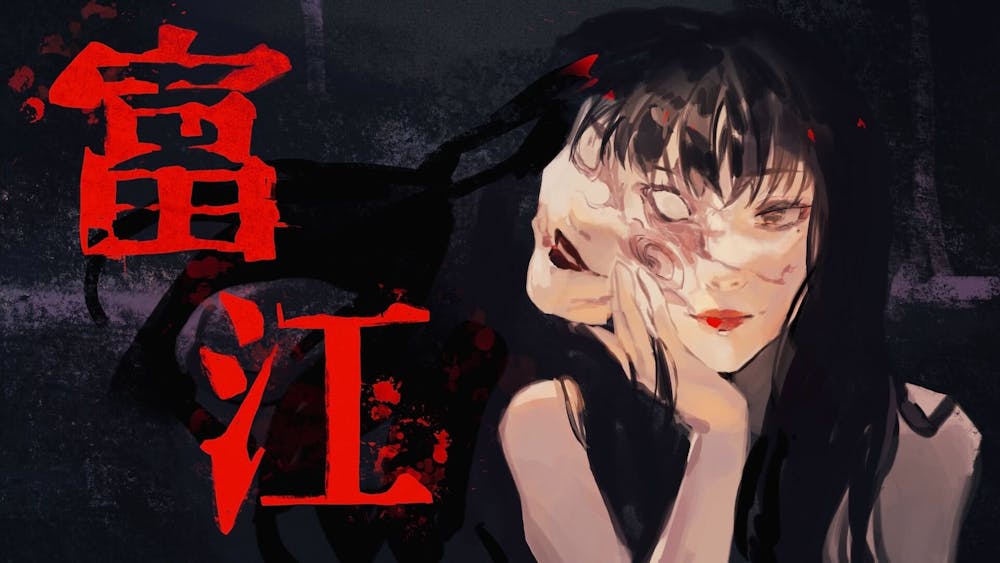In the world of horror manga, few characters resonate as grotesquely as Tomie. The titular character is no ordinary femme fatale, and it would be an oversimplification to view her only as an object of sexual fantasy. Tomie ensnares men, and they respond with disturbing violence—chopping, burning, and murdering—only for her to return again and again. Ultimately, Ito’s goal is not to vilify her but to reveal the paradox in human desire: the simultaneous fetishization and fear of beauty.
Tomie is first introduced as a schoolgirl who has been dismembered. Her friend, Reiko, mourns and wishes Tomie’s death was nothing but a dream. The teacher remarks that her death is a reality she must accept and that no amount of mourning will bring her back. Yet, as if mocking this finality, Tomie casually walks back into class with a simple “Sorry for being late.” Despite her miraculous return, the class seems apathetic—if not outright uneasy.
This tension surrounding Tomie stems from a dark truth: during a school trip fight, Tomie fell to her death from a cliff. However, rather than reporting the incident, the teacher and classmates tore into how Tomie flaunted her beauty, toyed with those around her, and insisted that a girl like her had it coming. They soon succumbed to collective madness and dismembered Tomie into 42 pieces, each taking a fragment to dispose of. Thus, Tomie’s reanimation was utterly foreseen. Amidst a conflict between classmates about confessing or concealing it, her very existence pushes them all to madness.
Though her debut features her more as a victim of mob mentality, Tomie possesses a mysterious allure, a vitality that allows her to regenerate from severed parts, and a malevolence that leads those around her to ruin. She is not a passive victim, nor is she an archetypal villain. She wields power, but this power is shaped by how others react to her. It seems that Ito, too, was reluctant to treat Tomie's character as merely disposable. From 1987 to 2000, she was serialized in various publications and later collected into three volumes.
Each iteration of Tomie shows her in different scenarios, but the underlying dynamic stays the same: the men in Tomie’s orbit are uncontrollably drawn to her. The intensity of their desire repels them. The men, unable to reconcile their love and hatred for Tomie, are consumed with an overwhelming urge to kill her. They carry it out. She then returns unscathed. Tomie thrives on such intense violence, regenerating from it and even using it to further her power.
The violence directed at Tomie reflects her tormentors’ fear of beauty and the darker impulses within themselves. Ito shows that desire and dread are entwined, as the chase for something so coveted comes with anxiety. Tomie forces those around her to confront their deepest anxieties: the craving to possess and the fear of losing control. Through her, Ito insinuates that desire can morph into the urge to destroy what defies control. Such a sentiment is not limited to fiction; in reality, female celebrities (particularly those who embody an idealized beauty) are often subject to relentless scrutiny. Their appearances are dissected, their choices criticized, and they are praised one moment only to be torn down the next. Tomie encapsulates this paradox of the idolization of beauty and the compulsion to diminish it.
What makes Tomie all the more unsettling is the way Ito blends the mundane with the grotesque. The horror in the series is not confined to the protagonist alone; it extends to the surrounding characters and their interactions. Her prey (and predators) are just regular people—students, teachers, artists, and office workers—who cannot bear the weight of their infatuations. However, Ito is less concerned with condemning each character’s actions than with analyzing them. He neither calls for a departure from the desire for beauty, condemns Tomie for exploiting men, nor mocks the men who turn on each other under her manipulation. Nonetheless, it is apparent that Ito is resolute in one assertion. Tomie is not a mere object of libido; she embodies desire itself.

